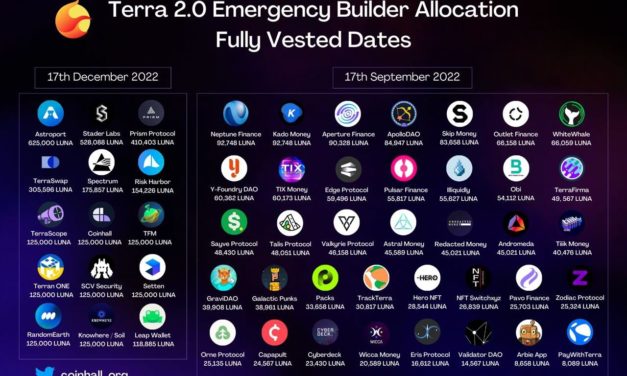Music NFTs a powerful tool to transform an audience into a community
As one of the oldest entertainment industries in existence, the music business has experienced many technological advances that enhanced widespread adoption. The digitalization of music meant that artists could reach any audience across the world, and digital distribution gifted people with unlimited access to music. With these advances in distribution came some drawbacks in music monetization. The way musicians make money in a digital format has reduced margins from media or video revenue. Artists have been pushed back to generating revenue from offline endeavors like concerts and selling merchandise as the online landscape has been filled with intermediaries that take a piece of the pie.“Web3 and existing platforms help us build a new chapter of the music industry.” Takayuki Suzuki, CEO at MetaTokyo — Web3 entertainment Studio — told Cointelegraph, “It was hard to find good music for me, checking many record stores in Tokyo and sometimes overseas. Now it’s very accessible via streaming.”A new paradigm of Web3 tools is giving creators the means to develop an existing audience and transform it into a community. Fan relations have become crucial and they have never been tighter with artists in Web3. Marcus Feistl, chief operations officer of Limewire, a Music NFT marketplace that was originally a free software peer-to-peer file sharing music-based platform, told Cointelegraph: “The music and creator industry is certainly on the verge of a step change, moving from a Web2 model focused on content consumption to a Web3 model focused on content ownership. Artists are just beginning to find their way to best utilize Web3 to interact with their audience.”Among the many use cases for nonfungible tokens (NFTs), the most prevailing has been the ability to form communities around token holders. The rise of decentralized autonomous organizations experimented with coordinating these communities in a digitally native way. All these unlock potential opportunities for independent artists willing to innovate in the next iteration of the music space.Disrupting the music industry once againThe music industry has always been willing to try new things. As Mattias Tengblad, CEO and co-founder of Corite — a blockchain-based crowdfunding music platform — told Cointelegraph, “When music videos came out in the 80s, it was entirely new and people weren’t sure what to make of it. Adoption of these things often starts slowly but eventually becomes mainstream.”Web3 platforms are in their early stages. The majority of users are crypto savvy and have a basic technical understanding of how to interact on-chain. As the space develops, Web3 music platforms can become a key piece in the way labels and artists do business and market themselves. The opportunities presented by this technology facilitate connections between like-minded individuals breaking any previous barriers to forming a community. “It was hard to maintain great relationships in the industry,” reflected Suzuki, “I’ve been constantly meeting and re-connecting with forward-thinking people.”These innovations aren’t exclusive to incumbents of the music industry and young talent native to Web3 can open the gates for new expression and monetization. It is encouraging the relationship between artists, middlemen and fans to transition into a community.Related: Web3 is creating a new genre of NFT-driven musicMusic innovation empowers those artists testing new technologies with the opportunity to become the next established artists of the upcoming generation. This can potentially diminish the importance of record labels to an artist’s success. Many record companies are getting involved by moving some of their activity on-chain and releasing NFT collections.“There will always be a need for record labels, but I think the ones that fail to adapt to the changing landscape are at risk of being left behind,” Tengblad said, adding:“Once you have a loyal group of supporters, I think the technology opens the door for you to monetize your work directly, while also sharing in the benefits of your success with your supporters.”Successful Music NFT drops show how Web3 can disrupt the fundraising model by allowing artists to go directly to fans for funding. Those artists that make an effort to engage with their community and build a direct relationship with their fanbase will benefit the most from Web3.From audience to communityAn audience is generally understood as a one-way relationship, while a community suggests a two-way communication between the artist and its fans. For a community to be productive, those involved should enrich the creative process by actively listening to each other’s needs and proposing solutions for the betterment of the community as a whole. As artists shift to a more community-driven approach, blockchain and NFTs allow artists to raise funds from their fans with no middlemen and offer unique benefits and opportunities back to the people who contribute to them. Prevailing platforms are still a crucial tool for community building and music distribution to complement a Web3 strategy.“Affordable digital recording has led to an explosion of musicians on YouTube who reach out to their community for collaborations, instant feedback, live streams, etc,” commented Tengblad, “Social media and chat programs like Twitter, Instagram, TikTok, Telegram, and Discord give people who are interested in what you are doing a chance to engage with more of your content, connect with you and with each other.”If an artist posts a new video on Youtube, their community can contribute to the artist’s work by providing instant feedback and proposing new ideas that can help the artist grow and develop further. Activities performed by the community tend to enjoy a bigger impact and immediately affect the growth of an artist. With the backing of a strong community, artists possess a solid foundation to build a career.Recent: NFTs will bring crypto to billions of users, explains VC investor The engagement process between the artist and their community has to become as simple as possible. Suzuki explained: “Web3 will give more power to artists and creators so there would be a need for education. Intermediaries could be supporters or contributors in a community not intercepting information or money.”This starts with clear communication and by making NFTs more accessible to everyone. Bringing NFTs and the model of content ownership closer to fans is what will ultimately drive artist communities, as it creates a much stronger and more exclusive connection between fans and creators.“For creators, this means an easy-to-use self-onboarding process where they can create their first NFT project in just a few clicks,” concluded Fesitl, “For fans this means that you can either use a fully custodial service without the need of owning a wallet or directly connecting an external wallet, providing the full Web3 experience.”Artists who are most prepared to succeed in today’s industry are the ones who are willing to use every tool available to build an interactive and engaged community around their work.
Čítaj viac






